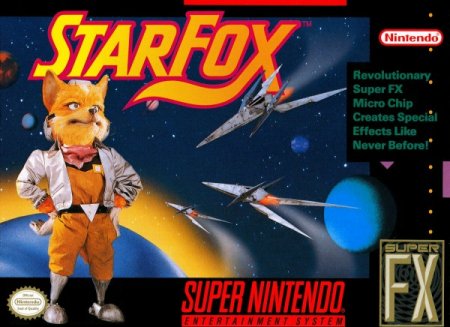This post has not been edited by the GamesBeat staff. Opinions by GamesBeat community writers do not necessarily reflect those of the staff.
[embed:http://www.youtube.com/watch?v=w2NjUDfOp2o ]
The video above is nothing new to any gamer. The sight of Mario leaping onto the first Goomba and getting his first mushroom hearkens back to 1985 and brings forth a rush of nostalgia to older gamers. Newer gamers might not recognize other stalwarts of the gaming faith, but Mario's mug is instantly familiar. Many great experiences have been had with the original Mario game, and any Mario game for that matter, by gamers of all kinds. Why do the memories last and why does the game hold up so well today? A combination of things: tight gameplay, charming graphics, and, often the most overlooked factor, the wide array of music and sounds that the game delivers.
Watch a minute or so of the video, except this time muted. The original Super Mario Bros. becomes a completely different game. It is devoid of the charming and timeless music of composer Koji Kondo, one of the most important aspects of the game. Lost are the sounds that are now synonymous with Mario games: the "boing" of jumping, the growing sound after picking up a mushroom, the "ding" of coins being collected.

Sad Goomba2.
Sounds and music in video games have been a very important aspect of the medium ever since its inception. They have evolved right alongside other aspects of gaming like graphics and gameplay. The music and sounds that we hear in our video games has not only grown over the years in complexity and scope, they have also led to a unique fan base, new approaches to marketing music, and a new level of immersion in the games we play.
Here is a brief history of audio in video games to show just how far we've come.
The 1970's
The first memorable sounds to be heard from a video game came from Pong in 19721. The game uttered blips every time the small white dot hit a small white paddle on either side of the screen, this was the gaming equivalent of a baby making its first sounds, albeit a little more peaceful and calming. For that time, the sounds were new and exciting.
Perhaps even more relevant to today's gaming action was the release of Gunfight by Midway Games1. Imported from Japan, it was the first game to use a microprocessor instead of hardwire circuits. Also important was the one-channel amplifier used to create sounds that are quite prevalent in games today: gunshots.

The Iconic Space Invader3.
In 1978, Space Invaders was imported1. The game featured a simple chromatic progression that served as the game's soundtrack. As the enemies grew closer, the track would increase in tempo, building tension as you rushed to destroy the last of the remaining invaders. This is perhaps the first example of how a video game soundtrack can actually influence the emotions that a gamer feels when playing a game. The increased tempo created both a sense of excitement and panic as your impending doom grew ever closer.
The 1980's
The Eighties was a period of great strides in video game music. It was in this decade that the original installments of classics like The Legend of Zelda, Super Mario Bros., and Pac-Man were created. Many timeless creations came to life and prominence, and music helped the classics of the video game medium achieve that status.
Pac-Man, arguably the most popular video game of all time, was released in 19801. The opening sounds of the game are ingrained the memory of many gamers. The "wakka wakka" of Pac-Man's insatiable appetite and the unfortunate noise of his death also became staples not only of the industry but to some extent popular culture as well.
[embed:http://www.youtube.com/watch?v=uswzriFIf_k ]
Mario and Donkey Kong made their debut in 1981's Donkey Kong. The music for the game was composed by Shigeru Miyamoto, also an extremely talented developer, on a small keyboard. Simple and catchy, the music was instantly memorable.
The Eighties also marked the first use of rock in a video game1. The game Journey's Escape featured a digitized form of music from the rock super group Journey. This set the stage for games featuring other bands and more licensed music.

Journey, Once Upon a Time4.
The rest of the Eighties featured heavy hitting originals that would spawn some of our most beloved franchises. Tetris and Super Mario Bros. both dropped in 1985. The two games contained music that would become ingrained in the minds of gamers for years to come. The Legend of Zelda and Final Fantasy were released in 1987 and featured epic soundtracks by Koji Kondo and Nobuo Uematsu, respectively. At the end of the decade, the next generation of systems had come about, allowing for even greater graphical prowess and audio capabilities.
The 1990's
As video games themselves became more complicated with the dawn of 16-bit systems, so did the music and sound effects contained within. It was a decade of many firsts. Act Raiser for the Super NES was one of the first games to feature a full-bodied symphonic score1. Play-by-play commentary was introduced in a sports game for the first time in Joe Montana Sportstalk Football II. Video games continued their march towards CD based storage with systems like the Sega CD that featured games with CD-quality soundtracks (Sonic CD). However, there were still amazing things to be found on cartridges.

Star Fox5.
Star Fox was of the biggest releases on the Super NES. While the game achieved headlines with Nintendo's Super FX chip, showing that a 3D experience could be had on the aging system, the game was also popular due in no small part to its interesting audio featuring he voices of your co-pilots and a score matching the space setting (cite). 1994 marked the year that Final Fantasy VI was released, known as Final Fantasy III in the United States. The game was one of the first to feature character-specific theme music and a wide array of sounds and styles. The soundtrack earned composer Nobuo Uematsu comparisons to famed film composer John Williams1.
The 32-bit systems hit in the forms of Sony's Playstation and Sega's Saturn. Both provided CD-quality sounds and effects1. The Nintendo 64 launched soon after. The original Resident Evil was released during this decade, using zombie moans and other unsettling sounds to create an atmosphere of pure terror. On the lighter side, one of the first interactive music games was born in the form of PaRappa the Rapper. Gamers interacted with the laugh-inducing music through various button presses.
[embed:http://www.youtube.com/watch?v=BhrYPf4qqaU&feature=related ]
1997 marked the release of instant classics like Final Fantasy VII and Castlevania: Symphony of the Night. Final Fantasy featured a whopping 85-song soundtrack with character themes and grooves ranging from samba to rock. Castlevania was similar in that it masterfully blended genres. Who knew that hard rock and classical would mix so well1?
1998 featured two very different games that highlighted the use of music and sound as a gameplay focal point. The first 3D Legend of Zelda, Ocarina of Time, the main character, Link, used a ocarina to teleport, summon his horse, and solve musical puzzles1. The other game, Dance Dance Revolution, set the stage for following music games by introducing scrolling arrows that the player had to match to successfully dance to the music.
Another point of interest from this decade: the launch of Sega's Dreamcast, featuring a 128-bit processor and impressive new audio technology1.
2000-Today
Sony's Playstation 2 was released in October of 20001. One of the games that would soon arrive on the system, Hitman, was the first, and certainly not the last, game to commission an orchestra to record the soundtrack of the game. Games like Kingdom Hearts continued to blur the line between movie and game, showcasing top-notch voice acting talent and Disney-esque scores for the Disney themed worlds of the game. Bungie's Halo was another landmark in the video game music world, featuring an ambitious soundtrack by Marty O'Donnell and Michael Salvatori that helped propel that series to have some of the best selling titles in recent history.
This generation of consoles started late in 2005 with the release of the Xbox 360. Music's role in gaming continues to grow in the most recent generation of game consoles as well. Games like Metal Gear Solid 4 showcase some of the best music that our medium has to offer. Interaction with popular music is on the brink of more change with the ability to play with real instruments being added to games like Rock Band 3. Even licensed music has been creatively used recently to make more believable worlds within games. Both Fallout 3 and New Vegas feature period-specific music from the 1930's and 1940's to enhance the setting and story.
[embed:http://www.youtube.com/watch?v=pLvsmho1lGA ]
As video games become more complex and ambitious, hopefully so will the music and sounds contained within.
Next Up: The Culture of Video Game Music and Music Sales
Works Cited
1. McDonald, Glenn. "A History of Video Game Music."www.gamespot.com. N.p., n.d. Web. 23 Nov 2010. <http://www.gamespot.com/features/6092391/index.html>.
Photos Cited
2. "Sad Goomba." www.mariowiki.com. N.p., 10 Aug 2009. Web. 23 Nov 2010. <http://www.mariowiki.com/File:SadGoombaBlue.jpg>.
3. darkeye. "Experimenting with Resolution." bio.display. 24 Sept 2008. Web. 23 Nov 2010. <http://biodisplay.tyrell.hu/2008/09/24/experimenting-with-resolution/>.
4. pointnshoot, . "Arnel Pineda: Journey's New Vocalist."Point N' Shoot's Weblog. 31 Dec 2007. Web. 23 Nov 2010. <http://pointnshoot.wordpress.com/2007/12/31/arnel-pineda-journeys-new-vocalist/>.
5. Iron Maten, . "Star Fox." Iron Maten's Blog. Web. 23 Nov 2010. <http://ironmaten.blogspot.com/>.
Videos Cited
"Super Mario Bros. Gameplay Video." youtube.com. Web. 28 Nov 2010. <http://www.youtube.com/watch?v=w2NjUDfOp2o>.
"Pac-Man Arcade gameplay." youtube.com. Web. 28 Nov 2010. <http://www.youtube.com/watch?v=uswzriFIf_k>.
"Parappa The Rappa – Bathroom Rap." youtube.com. Web. 28 Nov 2010. <http://www.youtube.com/watch?v=BhrYPf4qqaU&feature=related>.
"Fallout 3 Soundtrack – I dont want to set the World on Fire." youtube.com. Web. 28 Nov 2010. <http://www.youtube.com/watch?v=pLvsmho1lGA>.
